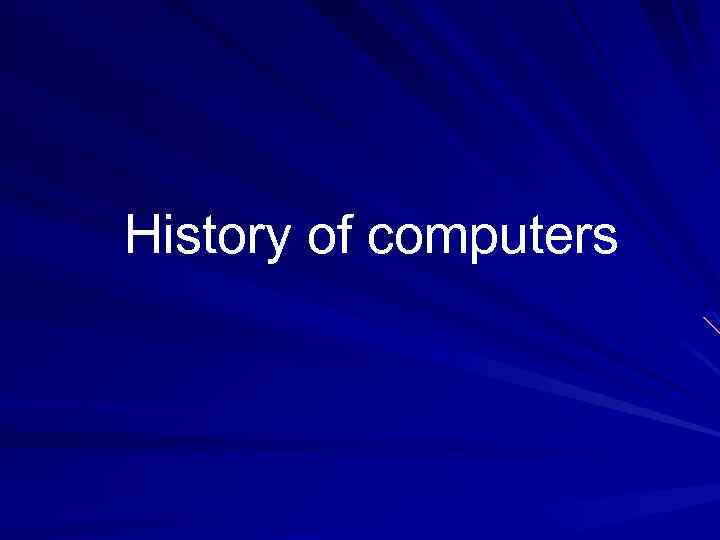 History of computers
History of computers
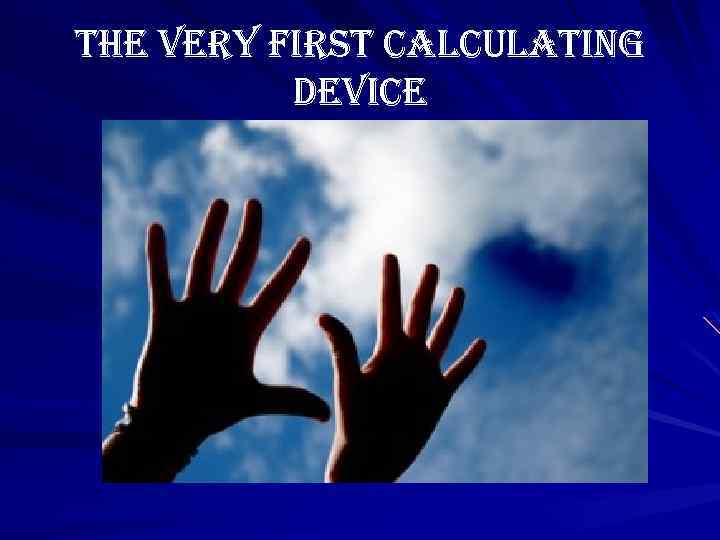 the very first calculating device
the very first calculating device
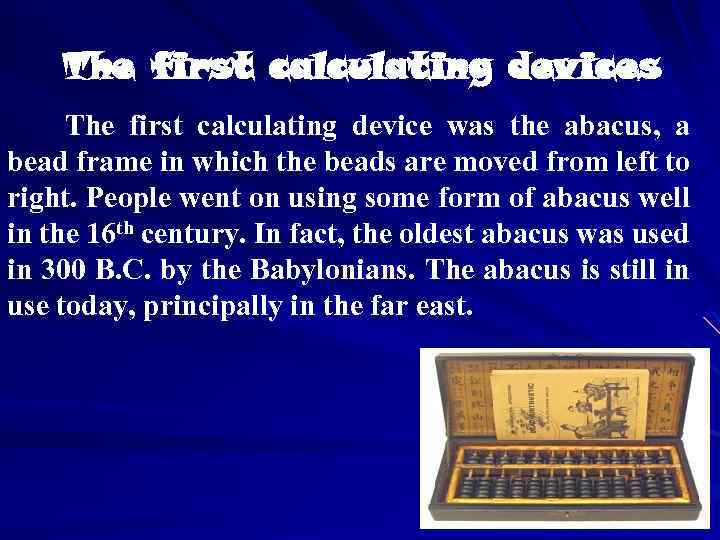 The first calculating devices The first calculating device was the abacus, a bead frame in which the beads are moved from left to right. People went on using some form of abacus well in the 16 th century. In fact, the oldest abacus was used in 300 B. C. by the Babylonians. The abacus is still in use today, principally in the far east.
The first calculating devices The first calculating device was the abacus, a bead frame in which the beads are moved from left to right. People went on using some form of abacus well in the 16 th century. In fact, the oldest abacus was used in 300 B. C. by the Babylonians. The abacus is still in use today, principally in the far east.
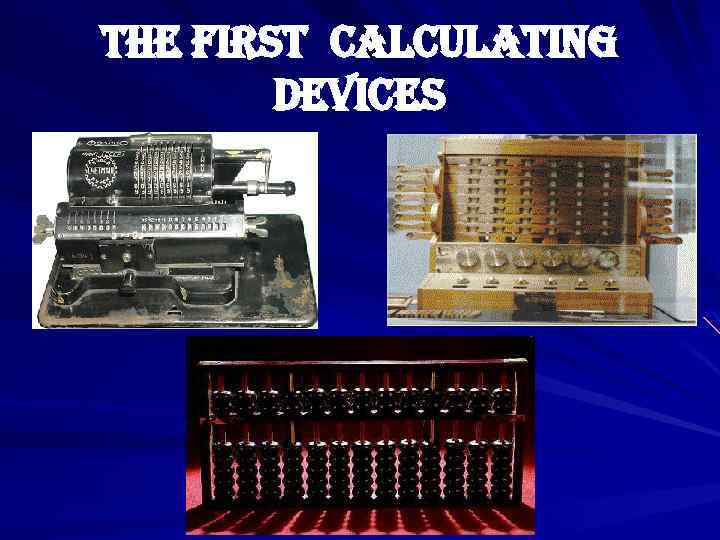 the first calculating devices
the first calculating devices
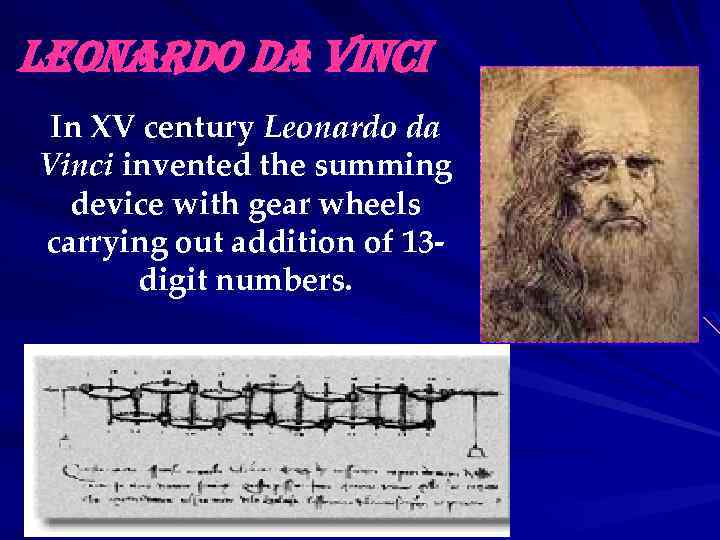 leonardo da Vinci In XV century Leonardo da Vinci invented the summing device with gear wheels carrying out addition of 13 digit numbers.
leonardo da Vinci In XV century Leonardo da Vinci invented the summing device with gear wheels carrying out addition of 13 digit numbers.
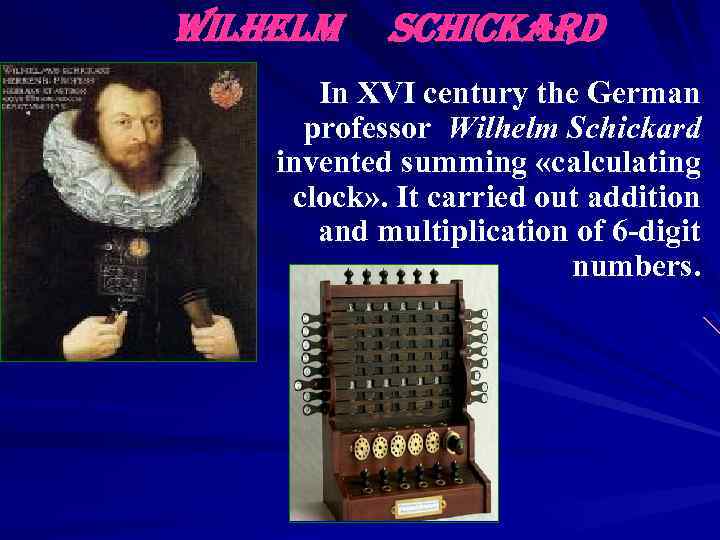 Wilhelm Schickard In XVI century the German professor Wilhelm Schickard invented summing «calculating clock» . It carried out addition and multiplication of 6 -digit numbers.
Wilhelm Schickard In XVI century the German professor Wilhelm Schickard invented summing «calculating clock» . It carried out addition and multiplication of 6 -digit numbers.
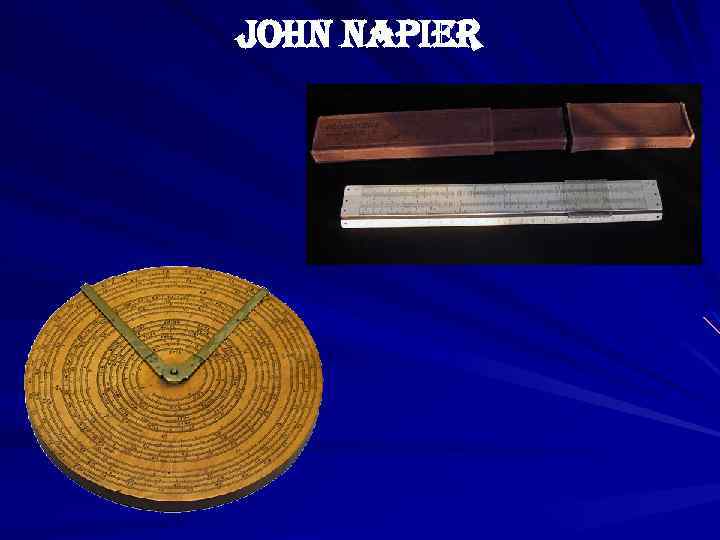 John napier
John napier
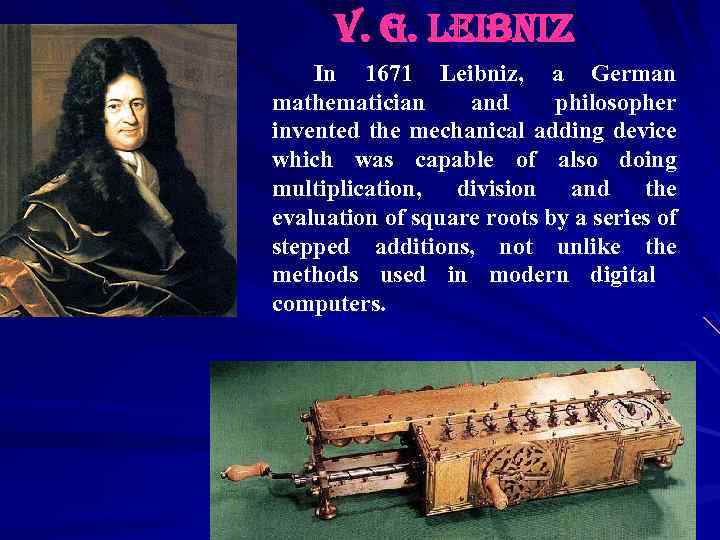 v. g. leibniz In 1671 Leibniz, a German mathematician and philosopher invented the mechanical adding device which was capable of also doing multiplication, division and the evaluation of square roots by a series of stepped additions, not unlike the methods used in modern digital computers.
v. g. leibniz In 1671 Leibniz, a German mathematician and philosopher invented the mechanical adding device which was capable of also doing multiplication, division and the evaluation of square roots by a series of stepped additions, not unlike the methods used in modern digital computers.
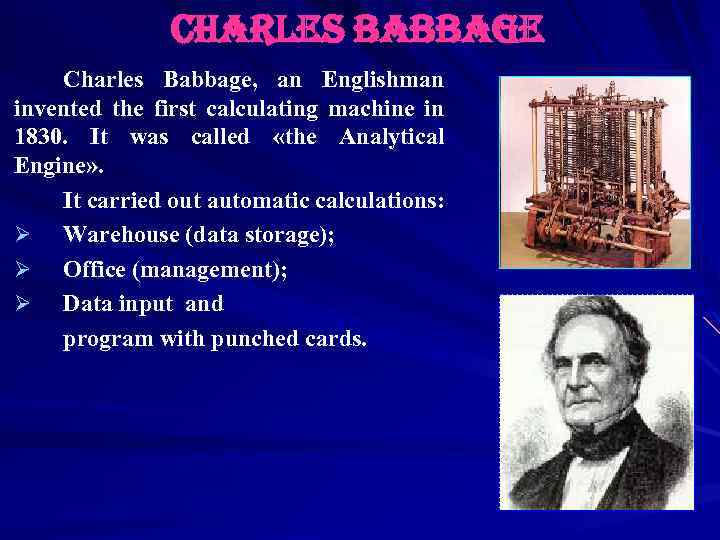 charles babbage Charles Babbage, an Englishman invented the first calculating machine in 1830. It was called «the Analytical Engine» . It carried out automatic calculations: Ø Warehouse (data storage); Ø Office (management); Ø Data input and program with punched cards.
charles babbage Charles Babbage, an Englishman invented the first calculating machine in 1830. It was called «the Analytical Engine» . It carried out automatic calculations: Ø Warehouse (data storage); Ø Office (management); Ø Data input and program with punched cards.
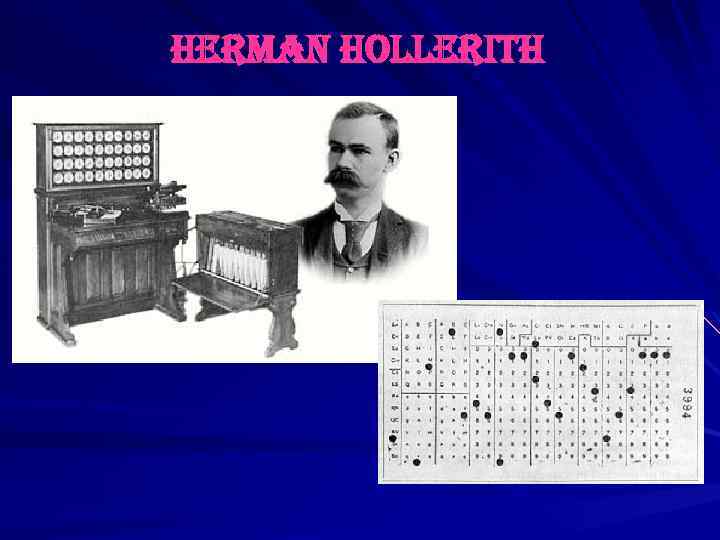 herman hollerith
herman hollerith
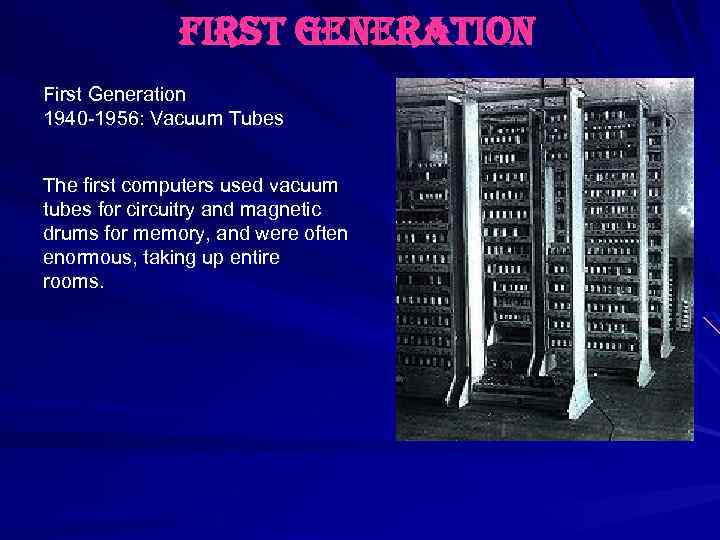 first generation First Generation 1940 -1956: Vacuum Tubes The first computers used vacuum tubes for circuitry and magnetic drums for memory, and were often enormous, taking up entire rooms.
first generation First Generation 1940 -1956: Vacuum Tubes The first computers used vacuum tubes for circuitry and magnetic drums for memory, and were often enormous, taking up entire rooms.
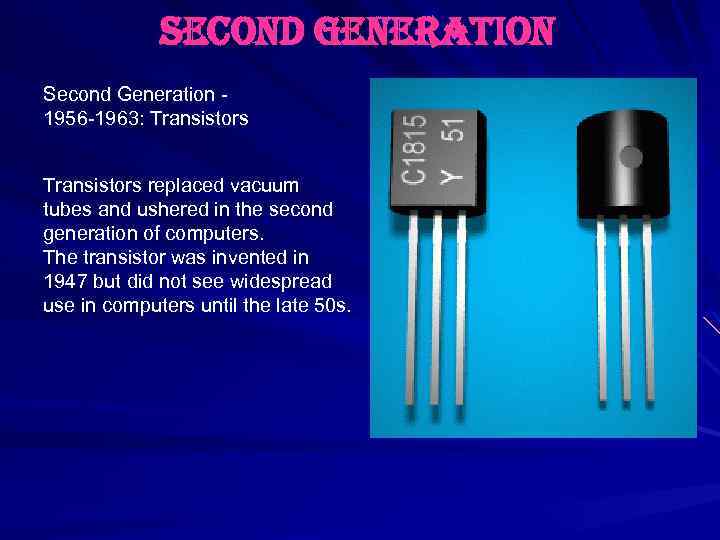 second generation Second Generation 1956 -1963: Transistors replaced vacuum tubes and ushered in the second generation of computers. The transistor was invented in 1947 but did not see widespread use in computers until the late 50 s.
second generation Second Generation 1956 -1963: Transistors replaced vacuum tubes and ushered in the second generation of computers. The transistor was invented in 1947 but did not see widespread use in computers until the late 50 s.
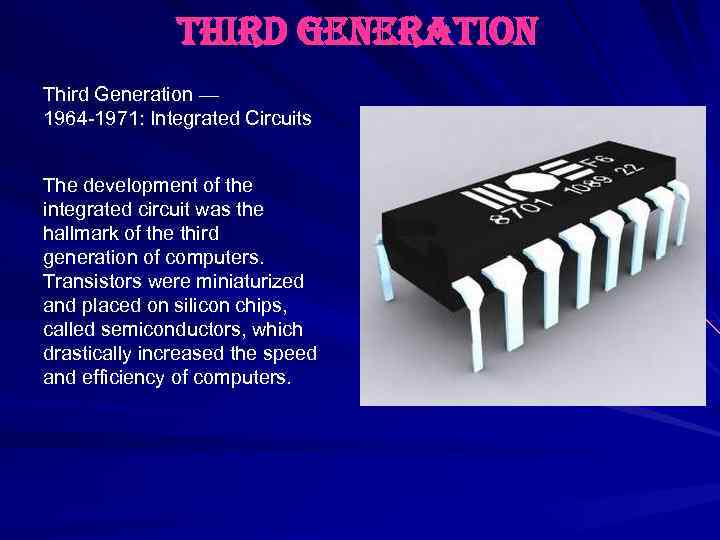 third generation Third Generation — 1964 -1971: Integrated Circuits The development of the integrated circuit was the hallmark of the third generation of computers. Transistors were miniaturized and placed on silicon chips, called semiconductors, which drastically increased the speed and efficiency of computers.
third generation Third Generation — 1964 -1971: Integrated Circuits The development of the integrated circuit was the hallmark of the third generation of computers. Transistors were miniaturized and placed on silicon chips, called semiconductors, which drastically increased the speed and efficiency of computers.
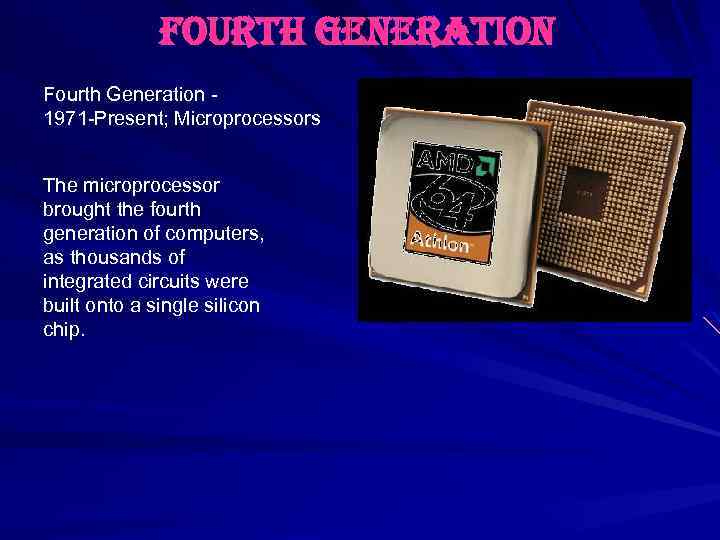 fourth generation Fourth Generation 1971 -Present; Microprocessors The microprocessor brought the fourth generation of computers, as thousands of integrated circuits were built onto a single silicon chip.
fourth generation Fourth Generation 1971 -Present; Microprocessors The microprocessor brought the fourth generation of computers, as thousands of integrated circuits were built onto a single silicon chip.
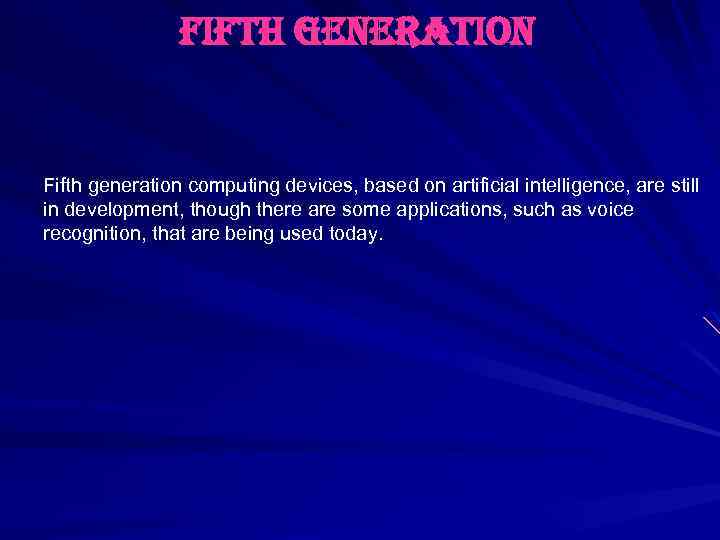 fifth generation Fifth generation computing devices, based on artificial intelligence, are still in development, though there are some applications, such as voice recognition, that are being used today.
fifth generation Fifth generation computing devices, based on artificial intelligence, are still in development, though there are some applications, such as voice recognition, that are being used today.














